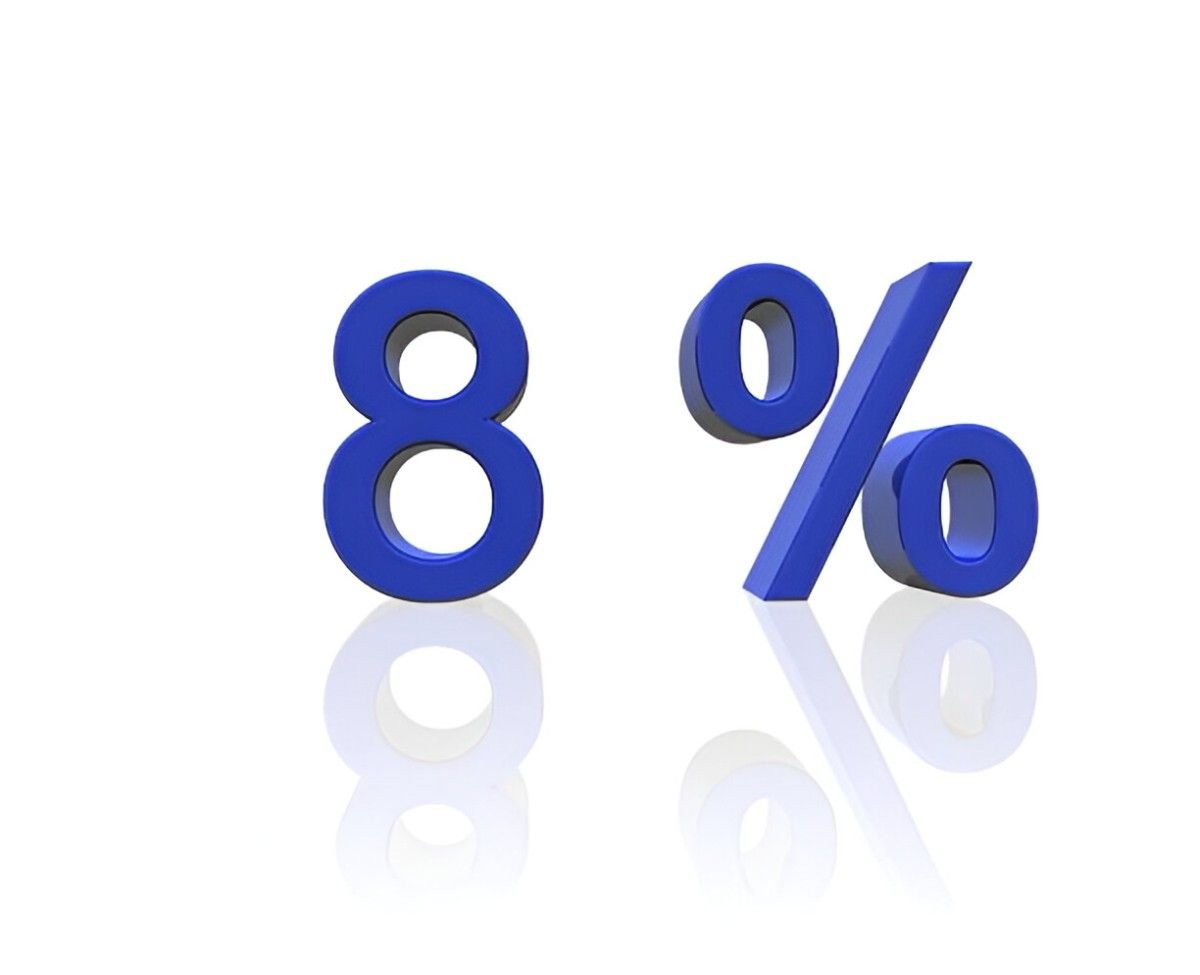For decades, the stock market has delivered average annual returns of about 8-10% before inflation. But simply buying any mutual fund won’t guarantee this result—you need the right strategy. In this guide, I’ll show you exactly how to build a portfolio that can realistically generate 8% annual returns, while managing risk appropriately.
Table of Contents
Can You Really Expect 8% From Mutual Funds?
Historically, yes—but with caveats:
Long-Term Market Averages (1926-2023)
| Asset Class | Avg. Annual Return | Volatility (Risk) |
|---|---|---|
| S&P 500 (Large-Cap Stocks) | 10.2% | High |
| Total Bond Market | 5.1% | Low |
| 60/40 Portfolio (Stocks/Bonds) | 8.3% | Moderate |
Key Insight:
- 100% stocks could deliver 8%, but with extreme volatility.
- A balanced portfolio (70-80% stocks) has historically achieved ~8% with less risk.
3 Mutual Fund Portfolios Targeting 8% Returns
1. The Classic 80/20 Portfolio
Allocation:
- 80% Stocks (60% U.S. + 20% International)
- 20% Bonds
Example Funds:
- U.S. Stocks: VTSAX (Vanguard Total Stock Market)
- International Stocks: VTIAX (Vanguard Total International)
- Bonds: VBTLX (Vanguard Total Bond Market)
Historical Performance (2000-2023):
- Avg. Return: 8.1%
- Worst Year: -22.3% (2008)
Best For: Investors with 10+ year time horizons who can handle some volatility.
2. The Dividend Growth Approach (7-9% Returns)
Allocation:
- 50% Broad U.S. Market (VTSAX)
- 30% Dividend Growers (VDADX or SCHD)
- 20% Bonds (VBTLX)
Why It Works:
- Dividend stocks tend to be less volatile than growth stocks.
- Reinvested dividends compound returns over time.
Example:
A $100,000 investment at 8% for 20 years grows to $466,000 (FV = \$100,000 \times (1.08)^{20}).
3. The Low-Cost Index Strategy
Allocation:
- 70% S&P 500 Index (VFIAX)
- 30% Small-Cap Value (VSIAX)
Historical Edge:
Small-cap value stocks have outperformed the broader market by 2% annually over long periods.
Expected Return:
- S&P 500: ~10%
- Small-Cap Value: ~12%
- Blended Return: ~8.5%
How Fees Can Sabotage Your 8% Goal
Every 1% in fees reduces your ending wealth by ~20% over 30 years.
| Expense Ratio | Impact on $100K Over 30 Years (8% Return) |
|---|---|
| 0.10% (Vanguard) | $1,006,000 |
| 1.00% (Average Active Fund) | $761,000 |
| Difference | $245,000 Lost to Fees |
Solution: Stick to index funds with expense ratios below 0.20%.
Rebalancing: The Secret to Consistent Returns
Without rebalancing, a 70/30 portfolio can drift to 90/10 in a bull market—increasing risk.
Simple Rebalancing Rule:
- Once per year, reset to your target allocation.
- Example: If stocks grow to 75% of your portfolio, sell 5% and buy bonds.
Math Behind Rebalancing Benefits:
A 2007 Vanguard study found that rebalancing added 0.4% annually to returns over 20 years.
Realistic Expectations: Will 8% Happen Every Year?
No—market returns are never smooth.
Sample Sequence of Returns (2015-2023):
| Year | S&P 500 Return | 80/20 Portfolio Return |
|---|---|---|
| 2015 | +1.4% | +0.9% |
| 2016 | +12.0% | +9.5% |
| 2017 | +21.8% | +16.2% |
| 2018 | -4.4% | -2.8% |
| 2019 | +31.5% | +22.1% |
| 2020 | +18.4% | +14.3% |
| 2021 | +28.7% | +20.5% |
| 2022 | -18.1% | -12.9% |
| 2023 | +26.1% | +19.2% |
| Average | +12.7% | +9.7% |
Key Takeaway: Even with down years, the long-term average approaches 8-10%.
Final Recommendations
- Choose low-cost index funds (expense ratio < 0.20%).
- Allocate 70-80% to stocks for ~8% growth potential.
- Rebalance annually to manage risk.
- Stay invested for 10+ years—short-term volatility is normal.
Bottom Line: An 8% return is achievable with discipline, but it requires patience during market downturns.





